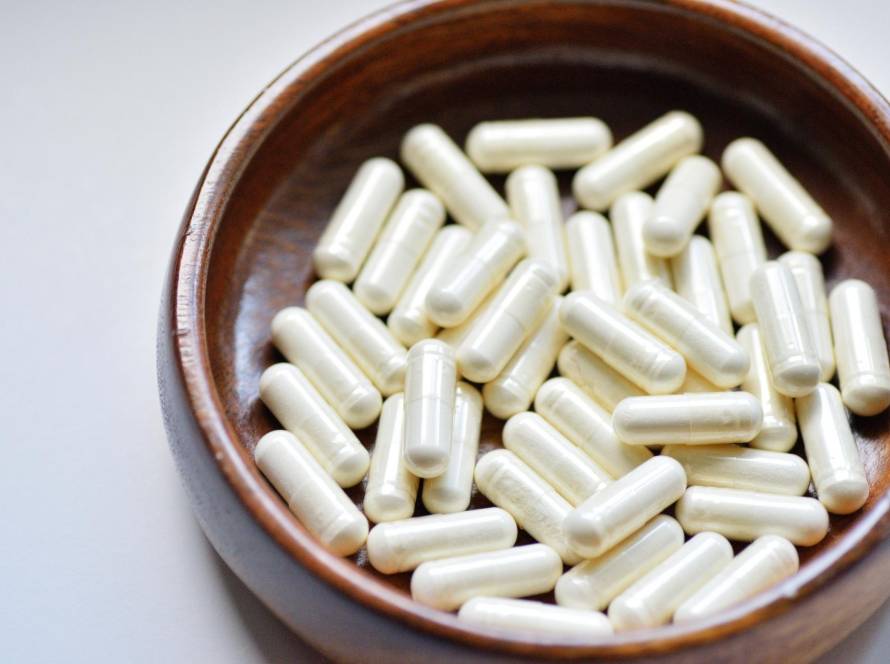Many people wonder if they can take berberine with metformin. This question matters more as we look at treatment options for type 2 diabetes mellitus (T2DM). Both compounds have remarkable histories, doctors have used metformin as a glucose-lowering drug for several centuries, making it a first-line treatment for T2DM. Berberine’s roots trace back to Chinese and Ayurvedic medicine around 3000 BC.
Let’s take a closer look at the scientific evidence behind berberine and metformin as individual treatments and if berberine can be taken with metformin in this piece. We’ll break down their mechanisms of action and what current research suggests about using them together.
Is it safe to combine berberine and metformin?
Yes, but with caution. Combining them may enhance glucose control but also raises the risk of low blood sugar or side effects, medical supervision is important.
What is berberine and how does it work?
Berberine is an isoquinoline alkaloid that nature produces in several plants, mainly from the Berberisgenus which gave it its name. We can find this bright yellow compound in the roots, rhizomes and stem barks of plants like goldenseal, Oregon grape and barberry. This compound has been the life-blood of traditional Chinese and Ayurvedic medicine, where we used it to treat gastrointestinal infections and diarrhea.
A natural compound from plants like Berberis
The Berberis family has around 450-500 species that serve as berberine’s main natural source. People have used these plants to treat various conditions like inflammation, infectious diseases, diabetes and constipation. B. vulgaris‘s bark contains more than 8% alkaloids, with berberine making up about 5%. Plants growing at lower altitudes have higher berberine concentrations (1.6-4.3%) than those at higher elevations.
Activates AMPK to improve glucose uptake
Berberine works through multiple mechanisms at the cellular level, but its main action involves activating AMP-activated protein kinase (AMPK). This enzyme acts as a cellular energy sensor that arranges various metabolic processes to reduce energy storage and increase production. AMPK activation helps berberine increase glucose transporter-4 (GLUT4) movement to cell membranes, which enhances glucose uptake into cells. So, this leads to better glucose metabolism and lower blood sugar levels.
Effects on insulin resistance and inflammation
Berberine shows remarkable effects on insulin resistance through several pathways. It boosts insulin sensitivity by reducing body mass index scores and fasting blood insulin levels. The compound also decreases intracellular insulin resistance in liver cells and stops hepatic glucose production. Its anti-inflammatory properties help improve metabolic health by reducing inflammatory cytokines like TNF-α and IL-1β. Studies suggest that berberine might interact with BLT1 receptors and alter inflammatory signaling pathways that contribute to insulin resistance.
Comparison to metformin in mechanism
Berberine’s mechanism shows striking similarities to metformin. Both compounds activate AMPK, stop gluconeogenesis and change the gut microbiota. Studies comparing berberine and metformin found their glucose-lowering effects match, with both showing similar strength in stimulating glucose consumption and lactate release in cells. In spite of that, berberine works better than metformin in controlling lipid metabolism, which makes it especially valuable for patients with dyslipidemia.
How does metformin work in the body?
Metformin stands as the go-to first treatment for type 2 diabetes and lowers blood glucose levels through several mechanisms. Scientists still uncover new ways this drug works, even after 50 years of use.
Reduces liver glucose production
Metformin targets the liver to decrease glucose production and blocks gluconeogenesis. The drug works with insulin and fights against glucagon’s effects in the liver to reduce glucose output. The molecular process involves metformin blocking fructose-1,6-bisphosphatase (FBP1), which controls the rate of gluconeogenesis. The drug blocks glucose production by stopping mitochondrial complex I and raising AMP levels, which creates an energy imbalance in cells. The drug also reduces hepatic glucose-6-phosphatase activity and slows down glycogenolysis.
Improves insulin sensitivity
Metformin boosts insulin sensitivity through several pathways. The drug activates insulin receptor tyrosine kinase, which triggers post-receptor insulin signaling. Research shows that metformin helps the whole body respond better to insulin in many resistant conditions. The drug helps cells make more glycogen and increases GLUT4’s activity, the transporter that insulin regulates. The drug also fights glucagon’s breakdown effects and reduces insulin production as cells become more sensitive.
Long-term safety and clinical use
Metformin stands out from other diabetes drugs because it doesn’t cause low blood sugar when used alone. Stomach issues are the most common side effects, but these usually go away on their own. U.S. trials showed all but one of 25 patients stayed on metformin despite side effects. Serious problems like lactic acidosis rarely happen and mainly affect people with kidney or liver problems. Patients often lose 2-2.5 kg of weight while taking metformin long-term.
Role of AMPK and other pathways
AMP-activated protein kinase (AMPK) activation plays a central role in metformin’s effects. The drug changes cell energy levels by blocking mitochondrial complex I, which raises the AMP:ATP ratio and turns on AMPK. AMPK acts like an energy gage in cells that starts breakdown processes and stops energy-consuming activities. Scientists have found that metformin can also activate AMPK through lysosomes using Axin and LAMTOR1 proteins. The drug also changes redox balance, shifts NAD+:NADH ratios and helps the gut release GLP-1.
What does research say about taking berberine and metformin together?
Research on combining berberine and metformin has expanded over the last several years. Scientists are learning about how these compounds might work better together.
Animal studies showing enhanced glucose control
Studies with diabetic db/db mice showed that berberine and metformin, alone or combined, helped lower blood glucose levels and improved insulin resistance. The results revealed some interesting differences. Berberine worked better at easing hyperlipidemia and obesity, while metformin was more effective at controlling blood glucose. Both compounds helped reduce food intake, body weight and HbA1c levels in animal models.
Human trials with improved insulin resistance
A clinical trial with 36 adults who had newly diagnosed type 2 diabetes found that berberine controlled blood sugar as well as metformin. Another study of 48 adults with poorly controlled diabetes showed berberine reduced HbA1c from 8.1% to 7.3%. A meta-analysis revealed that berberine combined with metformin was a big deal as it means that it reduced fasting plasma glucose (FPG) by 1.49 mmol/L, 2-hour postprandial glucose (2hPG) by 1.89 mmol/L and HbA1c by 0.65% compared to metformin alone.
Potential synergistic effects on AMPK activation
Both compounds activate AMP-activated protein kinase (AMPK) and their mutually beneficial action might come from complementary mechanisms. Lab studies suggest that combining metformin with berberine boosts effects on cellular regulatory proteins, which points to molecular-level synergy.
Effect on gut microbiota and SCFA production
Metformin and berberine change gut microbiota structure in rats in similar ways. These substances increase beneficial short-chain fatty acid (SCFA)-producing bacteria like Allobaculum, Bacteroides, Blautia and Butyricoccus. The microbiome changes restore intestinal SCFA content and boost levels of butyrate, acetate and valerate.
Changes in lipid profiles and inflammation markers
Berberine works better than metformin for lipid metabolism. By week 13 of treatment, triglycerides and total cholesterol decreased more with berberine than metformin, according to studies. The combination therapy showed even better improvements in lipid profiles. Berberine supplements also help reduce chronic inflammation by lowering serum C-reactive protein levels.
Are there safety concerns or risks with combining them?
We need to think over safety concerns carefully when combining berberine with metformin. These compounds can affect glucose metabolism and interact in several ways.
Risk of hypoglycemia when used together
The main safety concern comes from how both medications lower glucose levels. These medications independently reduce blood sugar and taking them together might make our blood glucose drop too low. Berberine works mainly when blood glucose levels are high, with minimal activity at normal levels. This characteristic substantially reduces the risk of hypoglycemia compared to conventional insulin secretagogues like sulfonylureas.
Gastrointestinal side effects and tolerance
Most people experience gastrointestinal disturbances with both medications. Clinical trials show that 34.5% of patients had temporary gastrointestinal side effects while taking berberine. These included flatulence (19%), diarrhea (10.3%), constipation (6.9%) and abdominal pain (3.4%). Metformin users often report diarrhea, nausea, flatulence, indigestion and vomiting. The combination of these medications might make these effects stronger.
Berberine’s effect on drug metabolism (CYP450)
Berberine’s impact on drug-metabolizing enzymes raises vital concerns. Research shows that it substantially inhibits CYP2D6, CYP2C9 and CYP3A4 activities. The urinary dextromethorphan/dextrorphan ratios jumped ninefold, which shows marked CYP2D6 inhibition. The losartan/E-3174 ratio doubled, revealing decreased CYP2C9 activity. CYP3A4 changes caused midazolam’s maximum plasma concentration to rise by 38%, area-under-curve by 40% and extended half-life from 0.66 to 0.99 hours.
Pharmacokinetics and bioavailability differences
Berberine can lower metformin concentrations in our body. This happens because berberine blocks organic cation transporters (OCT1 and OCT2) and multidrug and toxin extrusion 1 (MATE1), which help transport metformin. Taking these medications at different times might reduce this interaction.
Who should avoid this combination
We should avoid this combination if we have severe kidney or liver disease, take multiple medications that CYP2D6, CYP2C9 or CYP3A4 enzymes process, or have high bilirubin levels, especially in infants. People taking blood-thinning medications or cyclosporine should be extra careful.
Monitoring and dosage considerations
Here’s what we need to know about taking this combination:
- Begin with lower berberine doses (300-500mg daily) and increase slowly;
- Reduce berberine to 0.3g three times daily when using it with metformin;
- Take berberine before meals to absorb better and reduce GI effects;
- Check blood glucose levels regularly to avoid hypoglycemia.
The scientific evidence points to enhanced therapeutic benefits when berberine and metformin work together under proper monitoring. People with kidney or liver disease, those taking certain medications, or patients with complex medical conditions should be careful with this combination. Research continues to grow and without doubt, our grasp of the best dosing strategies and patient selection will improve. This combination could become a valuable tool to manage metabolic health.


